Share

Voices of British Ballet
Christopher Wheeldon
Dame Darcey Bussell talks to Natalie Steed to introduce an interview with the dancer and choregrapher, Christopher Wheeldon.
Christopher Wheeldon talks in 2003 with his former classmate and Royal Ballet First Soloist Jane Burn. Christopher speaks about his early years in dance with candour and charm, mentioning Anatole Grigoriev, his teacher at White Lodge, and his early forays into choreography with the inspirational Norman Morrice.
Christopher Wheeldon was born in 1973 in Yeovil, Somerset. He started training as a dancer from the age of 8. From 1984-1991 he attended the Royal Ballet School, winning the gold medal at the Prix de Lausanne in 1991. That same year he joined the Royal Ballet. In 1993 he joined the New York City Ballet, becoming a soloist in 1998.
He began choreographing for the New York City Ballet in 1997, retiring from dancing in 2000 to concentrate on choreography. In 2001, Wheeldon became the New York City Ballet’s first resident choreographer and first resident artist. From 2006-10 he also ran his own company, the Morphoses/The Wheeldon Company.
Aside from his work in New York and also in London, Wheeldon has established himself as a choreographer worldwide, including works for the San Francisco Ballet, the Bolshoi Ballet and the National Ballet of Canada. In 2011 he choreographed Alice’s Adventures in Wonderland, the Royal Ballet’s first full-length commission for 20 years, followed in 2014 by The Winter’s Tale. Other commissions include Strapless (2016) and Like Water for Chocolate (2022). In 2014 he directed and choreographed a musical version of An American in Paris, first performed in Paris, then in New York and London.
He was awarded an OBE in 2016 for services to dance.
More episodes
View all episodes
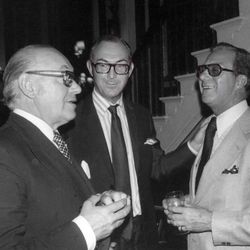
17. Clement Crisp on Constant Lambert
15:11||Ep. 17Critic and writer Clement Crisp gives a succinct and vivid summing up of the debt British ballet owes to Constant Lambert, not just as the conductor for the Vic-Wells and then the Sadler’s Wells Ballet, but as what Crisp calls their artistic conscience. He also speaks about Lambert’s own musical genius, both as a composer and a conductor, and his penchant for reviving unjustly overlooked music. The interview ends with the sad story of the ballet Tiresias and Lambert’s early death only weeks after its premiere.The interview is introduced by Gerland Dowler in conversation with Natalie Steed.Widely regarded as the doyen of British ballet criticism, Crisp was an imposing figure in the ballet world, both in person and in print, and was so for nearly half a century. His dazzling knowledge of dance (and other arts), authoritative style and occasional waspish barb made him a voice to be reckoned with. His passion for ballet began at the age of 12. He was educated at Bordeaux and Oxford Universities, and after spells in business and teaching, he became the ballet critic of the Spectator in 1966, followed in 1970 by several decades on the Financial Times. He was the Librarian and Archivist at The Royal Academy of Dance from 1968-1986, and Archivist until 2001. He wrote many books on ballet and its history and related arts, frequently co-authored with Mary Clarke. In 1992 he received the Royal Academy of Dance’s Queen Elizabeth II Coronation Award, and was also made a Knight of the Order of the Dannebrog, Denmark. He was awarded an OBE in 2005 for services to ballet. He died in 2022.Episode photo: L-R: John Field, Clement Crisp and Leslie Edwards in conversation at The Royal Opera House, London in 1975.© G.B.L. Wilson/Royal Academy of Dance/ArenaPAL.com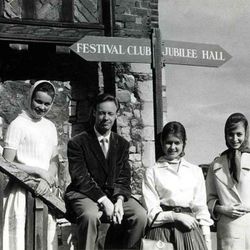
16. Dudley Simpson
25:24||Ep. 16This self-effacing, straightforward man with a twinkle in his eye is known for his compositions for many TV dramas in the 1960s and 70s, including Doctor Who. Perhaps surprisingly, this career started in ballet! Dudley Simpson recounts to Patricia Linton, the founder of Voices of British Ballet, how he travelled from Australia to the Royal Opera House where, with virtually no preparation, he conducted the orchestra of over 70 players, for a ballet performance of Coppélia. Dudley explains how this turned out.This episode is introduced by Barry Wordsworth in conversation with Natalie Steed.Dudley Simpson was born in Melbourne in 1922 and showed an early musical talent. At the age of 13 he won a piano competition for a radio station, and became its official accompanist. While excelling at improvisation, he also studied musical theory, including orchestration and composition. His studies were interrupted by five years military service in the Australian army, after which he started working for the Borovansky Ballet (the fore-runner of The Australian Ballet), first as a pianist and then as assistant conductor and, in 1957, as its musical director.As a result of working in Australia with Margot Fonteyn and a group of ballet dancers from the UK, Simpson decided to go to London. He worked first as a ballet pianist, but in 1959 began to conduct the Royal Opera House Orchestra in ballet performances, becoming its principal conductor from 1960 to 1963. This involved a considerable amount of touring in Europe and the Middle East, with Fonteyn and Rudolf Nureyev leading the company. In 1963, Simpson arranged Lizst’s B minor sonata for Frederick Ashton’s ballet Marguerite and Armand.By 1964, he had already started working for television. Simpson began the work for which he is best known, the incidental music for Doctor Who. This involved composing and directing the music for 62 stories over nearly 300 episodes. Simpson’s involvement with Doctor Who continued until 1980. During this period he worked on many other television series, including The Brothers, Blake’s 7, The Tomorrow People and Tales of the Unexpected. He also composed symphonic music and music for two ballets, A Winter Play for Sadler’s Wells Royal Ballet and Ballet/Class for the The Royal Ballet School. Simpson retired in 1987 and returned to Australia, where he died in 2017, aged 95.Episode photograph: ROYAL BALLET SCHOOL AT ALDEBURGH, Jill Montgomery, Dudley Simpson, Avril Bergen, Susan Turnham, July 1961, (c) Royal Academy of Dance / ArenaPAL.com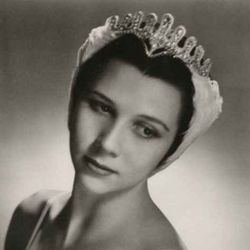
15. Beryl Grey
19:36||Ep. 15Darcey Bussell introduces this episode featuring the dancer Beryl Grey.Beryl Grey is in conversation with Frank Freeman, who sadly died in 2011, about her early training, first with Madeleine Sharp and then with Phyllis Bedells before going to the Sadler’s Wells School at the age of 10 in 1937. She joined the Sadler’s Wells Company when she was 14, and started performing leading ballerina roles almost straight away. She talks about this, and about touring during the war, before concluding with an account of the Company’s historic opening performance of Sleeping Beauty at Covent Garden in 1946.Beryl Grey was born 1927 in Highgate, London and died in 2022. She began her ballet training at the age of four. At the age of 10, having passed all the Royal Academy of Dance examinations it was possible for her to take, she entered the Sadler’s Wells School. When she was 14, she joined the Sadler’s Wells Company, and almost immediately won leading roles. She danced a full Swan Lake on her fifteenth birthday and Giselle in 1944.In 1957, she resigned from the Royal Ballet, and embarked on a new international career as a guest ballerina, including appearances with the Royal Ballet and (London) Festival Ballet. In 1957-8 she was the first English dancer to be honoured as a guest artist in Leningrad, at the Bolshoi in Moscow and in Tiflis [Tbilisi] . In 1964 she became the first Western guest artist to feature with the Peking Ballet and the Shanghai Company.From 1968 - 1979 Beryl Grey was the Artistic Director of London Festival Ballet. She was President of English National Ballet, President of the Imperial Society of Teachers of Dancing and Vice-President of the Royal Academy of Dance. Her many honours include five honorary doctorates and the Queen Elizabeth II Coronation Award of the Royal Academy of Dance (in 1997). In 2016 she received the De Valois Award for Outstanding Achievement at the Critics’ Circle National Dance Awards. She was appointed C.B.E. in 1973, D.B.E. in 1988 and in 2017 was made a Companion of Honour (C.H) for services to dance.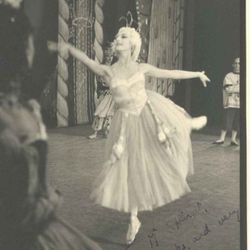
14. Brenda Hamlyn
21:14||Ep. 14Brenda Hamlyn-Bencini talks about training under Marie Rambert, the post-war dance scene and touring Germany with ENSA in the immediate aftermath of WWII.At 92, Brenda Hamlyn-Bencini describes events and people from the 1940s, as if it was yesterday. She certainly does not dispel any myths about ‘Mim’ [Marie] Rambert’s powerful personality. Brenda talks candidly of her days at Cone Ripman School during the war, and of taking classes with Rambert herself in London, whom, for all her harshness, she admired. She joined Ballet Rambert and speaks of the devastation she witnessed on an ENSA tour of Germany straight after the war. Brenda also speaks of working with Walter Gore and Frank Staff. Hamyln-Bencini is remembered as a wonderful teacher and lifelong advocate and devotee of the Cecchetti method. The interview is introduced by the dance historian and curator Jane Pritchard.Brenda Hamlyn was born in London in 1925. She trained at the Cone Ripman School from 1934-41. She started taking classes with Marie Rambert in London, as a result of which she began working for Lunch Time Ballet in 1941. A short period with the Ballet Guild was followed by full membership of Ballet Rambert from 1943-8. During this time she toured extensively with Rambert, including an ENSA tour to Germany immediately after the war, and a tour to Australia and New Zealand in 1947-8. In 1948 she joined the Empire Ballet in Leicester Square, and began taking classes with [Vera] Volkova and [Stanislas]Idizikowski. In 1951 she went to Milan, and began dancing throughout Italy and other parts of Europe, including Salzburg and Cologne. In 1963 Brenda Hamlyn opened her own Scuola de Danza Hamlyn in Florence, qualifying shortly after as a Cecchetti teacher. She has since become internationally renowned as an expert on and practitioner in the Cecchetti Method. In 1987 she became a Cecchetti examiner and in 1989 President of the Cecchetti Society of Italy. On stepping down from directorship of her own school after 23 years, she continued to teach and lecture in many countries on the Cecchetti Method until well into the 1990s. In 1996 she won the Enrico Cecchetti Medal and, in 1998, the Premio Cecchetti.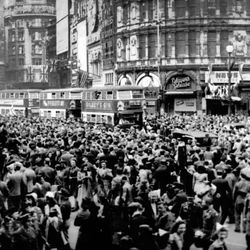
13. Joan Seaman
13:52||Ep. 13Joan Seaman gives us a wonderful bird's eye view of VE Day which she spent seeing Sadler's Wells Ballet stars Margot Fonteyn and Robert Helpmann dance Coppélia and her interview is full of the amazing good humoured selflessness demostrated by so many young people in World War II. Joan had volunteered to serve in the WAAF at 19 and it was during this time that she discovered what would be a life-long enthusiam for ballet. She went on to be deeply involved in the Ballet Association, In this episode she talks to Gerald Dowler about her first encounters with ballet whilst volunteering with the WAAF.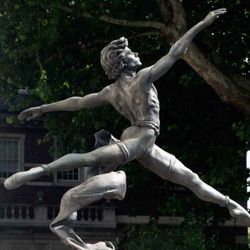
12. David Wall
23:50||Ep. 12David Wall was one of the greatest male dancers of his era, with an extraordinary stage charisma, range, theatricality and honesty. In this interview he talks to Frank Freeman, a former colleague, about his early training and his work in the Royal Ballet Company, which included partnering Dame Margot Fonteyn at the age of 19, and having major roles created on him by Sir Frederick Ashton, Antony Tudor and Sir Kenneth MacMillan. He also gives us some insight into his enthusiasm for theatre and his friendship with some of the great actors of the time. The interview is introduced by Voices of British Ballet founder and dancer, Patricia Linton, in conversation with Natalie Steed.David Wall’s career in dance began with ballroom dancing classes, followed by ballet classes with Mrs Durnsford in Windsor. Training with the Royal Ballet School began when he was 9 years old, and he joined the Royal Ballet Touring Company in 1963. He was appointed Principal at the age of 20, the youngest in the history of the Company, having already partnered Margot Fonteyn in Les Sylphides at the age of 19 and going on to perform Swan Lake with her the following year.He joined the Royal Ballet at Covent Garden in 1970, where he continued to partner Fonteyn frequently, as well as Doreen Wells, Lynn Seymour, Natalia Makarova and all the principal ballerinas of the time. His male colleagues included Rudolf Nureyev and Sir Anthony Dowell, whose brilliance in no way overshadowed his own.While in the Royal Ballet, Wall worked with many choreographers, including Dame Ninette de Valois (Rake’s Progress), Frederick Ashton and Antony Tudor. He is often remembered for his work in some of the heavily dramatic ballets of Kenneth MacMillan: Romeo in Romeo and Juliet, Lescaut in Manon and Crown Prince Rudolf in Mayerling, the last two roles having been created on him, but he also excelled in lighter pieces, such as La Fille mal gardée, The Two Pigeons and Coppélia, aside from achieving great acclaim in the classics such as Sleeping Beauty, Swan Lake and Giselle.Wall retired from dancing at the top of his career in 1984. He was then Assistant Director and Director for the Royal Academy of Dance until 1991. In 1995 he began to work as Ballet Master for English National Ballet until 2011, though he continued to coach both there and for the Royal Ballet. Wall was married to the ballerina Alfreda Thorogood and they had two children. He was appointed CBE in 1985, and died in 2013.A charismatic presence on stage, in whatever type of role, tragic, noble, sinister, light-hearted, he was always technically impeccable, as well as acutely sensitive to the essence of a work. He was thus able in his later years to pass on his insights to the next generation of dancers.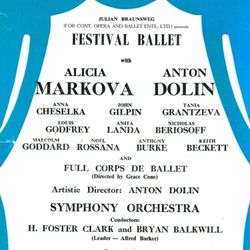
11. The Braunsweg Years
58:24||Ep. 11The story of Festival Ballet and the impressario Julian Braunsweg is told by a panel who danced with the company.The dance writer, and former dancer, Deborah Weiss is joined in the studio for a special Voices of British Ballet round table discussion. Anita Landa, Pamela Hart, Joyce Lyndon and David Long, are all former dancers with Festival Ballet, and talk about the early days and legacy of one of the most important companies in the history of British ballet.Festival Ballet was founded by the impresario Julian Braunsweg. He persuaded Dame Alicia Markova and Anton Dolin to lead the company, which started with a concert tour in 1949.Taking its name from the forthcoming Festival of Britain, the company was originally named Festival Ballet and then, in 1969, London Festival Ballet. In 1989, it changed its name once again, to English National Ballet.The discussion focuses on the Braunsweg years, 1949 until he was ousted in 1965. Julian Braunsweg left a memoir of the time, his so-called Ballet Scandals.
10. Noel Bronley
24:11||Ep. 10Noel Bronley was a member of International Ballet from 1946 until it closed in 1953. Little remembered now, at the time International Ballet was a very large undertaking of over 100 people. It toured extensively, both in Britain and abroad, under the direction of its founder, director and prima ballerina, the redoubtable Mona Inglesby. In conversation with Patricia Linton, Noel speaks about the vicissitudes of touring and landladies, and also gives us some candid insights into the character of Mona Inglesby – and the Inglesby parents.The interview is introduced by Natalie Steed and Jane Pritchard, Curator of Dance at the Victoria and Albert Museum.Born on Christmas Day in 1927, Noel Bronley (born Brown) started ballet classes in order to strengthen her body and correct a curvature of the spine. Loving dancing, she quickly became determined to have a life in ballet and trained at the Sadler’s Wells Ballet School, although, as a security, her father insisted that she did a Pitman’s course in shorthand and typing. She joined Mona Inglesby’s International Ballet in 1946, when it had been running for 5 years. Having joined, and, at Inglesby’s insistence, having adopted the name Bronley (after Bronislava Nijinska), Noel immersed herself in touring and performing in what at the time was a bigger company than the Sadler’s Wells Ballet. This was her life until 1953, when, having failed to secure an Arts Council grant, International Ballet was forced to fold, despite having brought ballet to millions over its existence and up to then having had no public funding. Since 1953 Noel has played a big role in keeping memories of the company alive and ex-members in touch through re-unions. Belated recognition of International Ballet came when a plaque was placed in the Royal Festival Hall on London’s South Bank in 2012.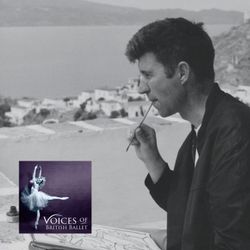
9. John Craxton
20:53||Ep. 9For over half a century, John Craxton was a major force in the visual arts of this country. From the late 1940s on, his main source of inspiration had been the landscape and people of Greece. Choosing Craxton for the designs, sets and costumes of Sir Frederick Ashton’s Daphnis and Chloë in 1951 was, therefore, an inspired choice. In conversation with Patricia Linton and Anthony O’Hear, Craxton speaks of how this came about, of working with Ashton, and of the influence of Margot Fonteyn on his work. He also expresses strong views on the importance of visual artists in ballet.The interview is introduced by Anthony O'Hear in conversation with Natalie Steed.John Craxton was born in London in 1922 into a well-known musical family. His father, Harold Craxton, was a composer and, for over 40 years, a Professor at the Royal Academy of Music. Janet Craxton, John’s sister, was a distinguished oboeist. At the age of 17, John Craxton went to Paris to study art, being too young for the Chelsea School of Art. When war started, he continued his studies in various London colleges. He mounted solo exhibitions in 1942 and 1944 and in 1943 toured Pembrokeshire with his contemporary Graham Sutherland, by whom he was clearly influenced. Other influences around this time were the Romantic painter Samuel Palmer (1805 – 1881) and his close friend Lucian Freud.After the war Craxton began to travel widely, but it was Greece, and Crete specifically, that particularly attracted him and where he spent increasing amounts of time. From around 1970 until his death in 2009, he shared his life between a home in Crete and London.Craxton was attracted to the light and colour of Greece, and to what he saw as an arcadian life, both human and natural. His art became suffused with the textures, personalities and the floral and geological forms of Greece, all rendered with striking clarity and colour. As time went on, his often very large canvases showed a tendency to semi-abstraction, but an abstraction always rooted in the flowers, trees, landscapes and pastoral life of Greece, and at times showing the influence of Byzantine iconography.His designs for the ballet Daphnis and Chlöe in 1951 are at the start of his Grecian odyssey, and show clearly the direction his art was taking, away from England and Wales, and into an imagined Hellenic paradise.Over the years Craxton gained increasing recognition, both in Britain and in his adopted Greece. He had major retrospectives at the Whitechapel Gallery in 1967 and, two years after his death, at Tate Britain in 2011. John Craxton was elected Royal Academician in 1993.The photograph of John Craxton is by W. Suschitzky, Copyright the Estate of W. Suschitzky